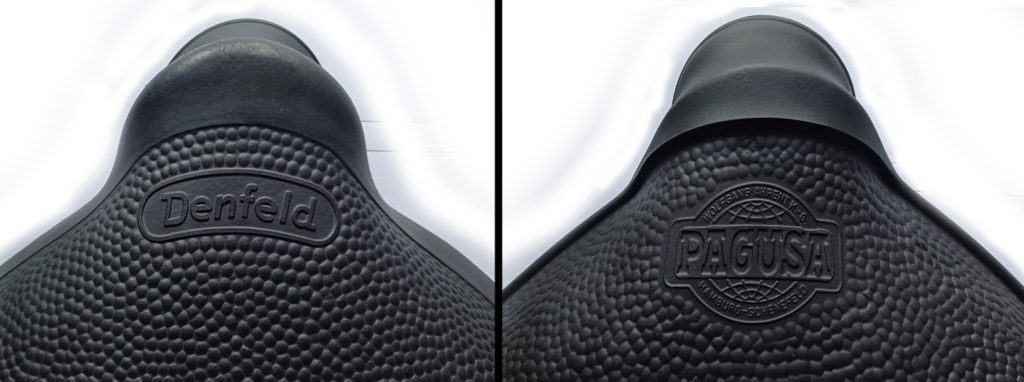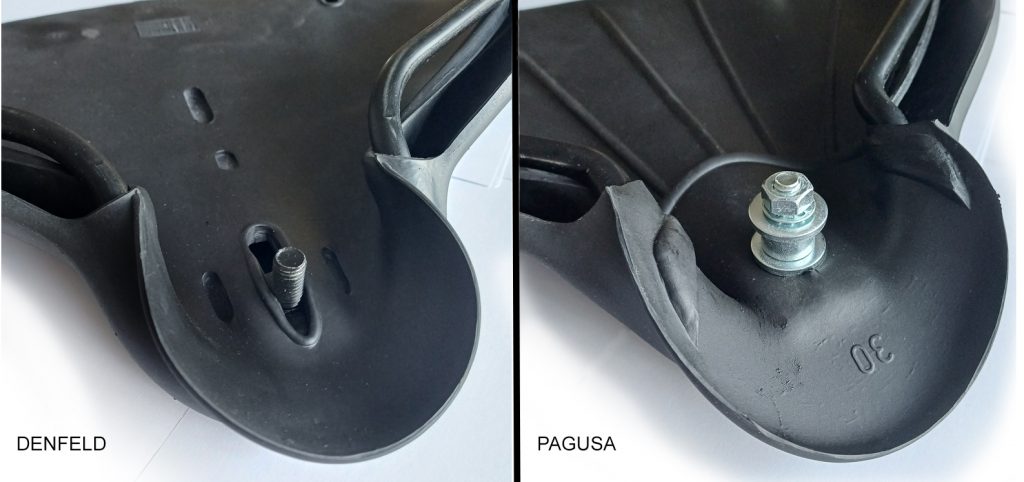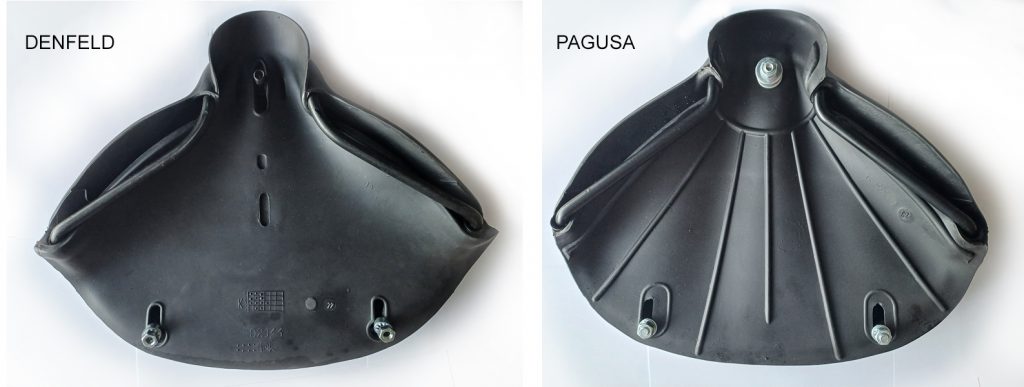The only difference between the Denfeld en Pagusa saddle is the saddle deck.
There are small differences between the saddle deck frames: the shape of the frame and the front threaded bolt.
The Pagusa saddle bolt it is a bit longer and has a spacer so that the front of the saddle deck sits +- 1.5 cm higher compared to the Denfeld saddle deck.
The grain texture of the Denfeld rubber saddle deck surface is finer than the Pagusa grain texture. There is no quality difference
All other parts are the same: subframe, Z-bracket, rubber spring, spring stop piece, mounting hardware.
Info Mark Huggett:
Post 22 June 1999:
BMW specified “Pagusa” under that number which is also confirmed in the factory parts listing which I have a copy of.
BMW drew about 60% of all the saddles from Pagusa (I’ve written about this subject many times in the restoration tips).
The Denfeld saddles also fit, but were mainly aftermarket. You can even see the outline of the “Pagusa” logo in the exploded diagrams in the original BMW parts catalogues.
Post 21 April 1999:
I always maintained that BMW never used the Denfeld rubber saddles as OEM until just recently when I received the factory specifications and cost analysis from way back then.
What a surprise. Basically BMW had a policy of having at least 3 suppliers of most components, the main one having at least 70% of the stake and the other 2 as basically an insurance.
Pagusa (the original Patent Gummi Sattel) shared the lions heart whereas Denfeld and Franke shared the dregs.
Info Craig Vechorik (post vintagebmw.org/forum on Nov 27th, 2023)
Re: Denfeld vs Pagusa?
Unread post by vechorik1373 » 27 Nov 2023 17:33
My understanding is, (I could be wrong, I never worked for Butler & Smith) that all the 1955 – 1969 bikes exported to the USA came with (ugly, in my opinion) bench seats. Solo seats were offered as an accessory by Butler & Smith, but they were Denfeld seats, not Pagusa. In Europe, the bikes were sold with Pagusa solo seats.



